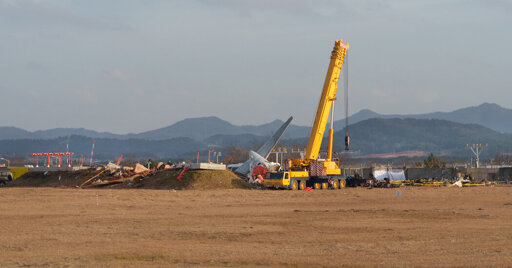Summary
Aviation analysts are investigating the deadly crash of Jeju Air Flight 7C2216 at Muan Airport, South Korea’s worst aviation disaster, killing 179 of 181 aboard.
The plane skidded on its belly and struck a concrete barrier housing a localizer antenna, leading to a fireball explosion.
Experts highlight the rigid structure’s role, contrasting it with softer, frangible barriers designed to minimize impact in runway safety areas.
Investigators will assess compliance with international safety standards and whether the airport’s infrastructure contributed to the crash.
Preliminary findings are expected in the coming month.



From the article:
So it’s not out of the usual range for distance, but the presence of an unbreakable barrier was a problem.